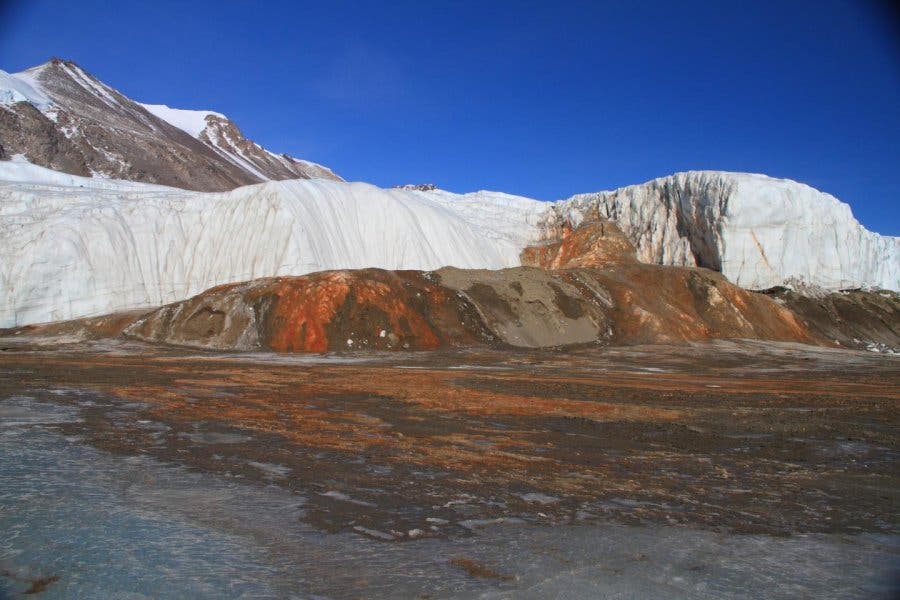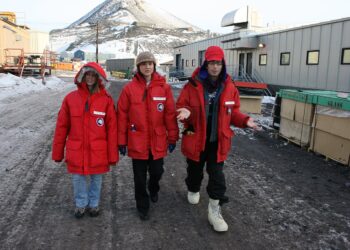In 1911, scientists came across an unusual waterfall whose water flowed red. It’s been called the Blood Falls ever since, but it was only very recently that a team of researchers was able to connect the dots. New evidence suggests the Blood Falls is connected to a large source of salty water that may have been trapped under Taylor Glacier for more than a million years.

Researchers from the University of Alaska Fairbanks and Colorado College used a type of radar to detect the brine feeding Blood Falls. The method uses two antennas — one to transmit electrical pulses, the other to receive (read) them — to track the brine from the water with radio-echo. It’s this iron-rich salty water that ultimately causes the falls to turn red when it contacts air, as reported in the Journal of Glaciology, and not algae as speculated earlier.
“We moved the antennae around the glacier in grid-like patterns so that we could ‘see’ what was underneath us inside the ice, kind of like a bat uses echolocation to ‘see’ things around it,” said co-author Christina Carr, a doctoral student at UAF.
This ingenious method ultimately allowed the team to identify the Taylor Glacier as the source of the brine. That was somewhat surprising because no one thought liquid water can persist inside such an extremely cold body. However, there are some conditions where physics can explain how water can flow even in a cold glacier, as one of the researchers explained.
“While it sounds counterintuitive, water releases heat as it freezes, and that heat warms the surrounding colder ice,” she said. The heat and the lower freezing temperature of salty water make liquid movement possible. “Taylor Glacier is now the coldest known glacier to have persistently flowing water,” according to glaciologist Erin Pettit from the University of Alaska Fairbanks.
Moreover, the lake and water system underneath the glacier is perpetuated by the water’s inherent salty nature. Any water with salt in it will have a lower freezing point depending on the saline concentration.
Blood Falls is a lot less creepy now that science stepped in. That’s not to say Blood Falls is out of secrets. The ancient water system that feeds the falls with iron-rich brine could make it an excellent site for studying microbes in an environment maybe not too different from some extraterrestrial locations. Europa and Enceladus come to mind, especially given NASA’s recent announcement.






